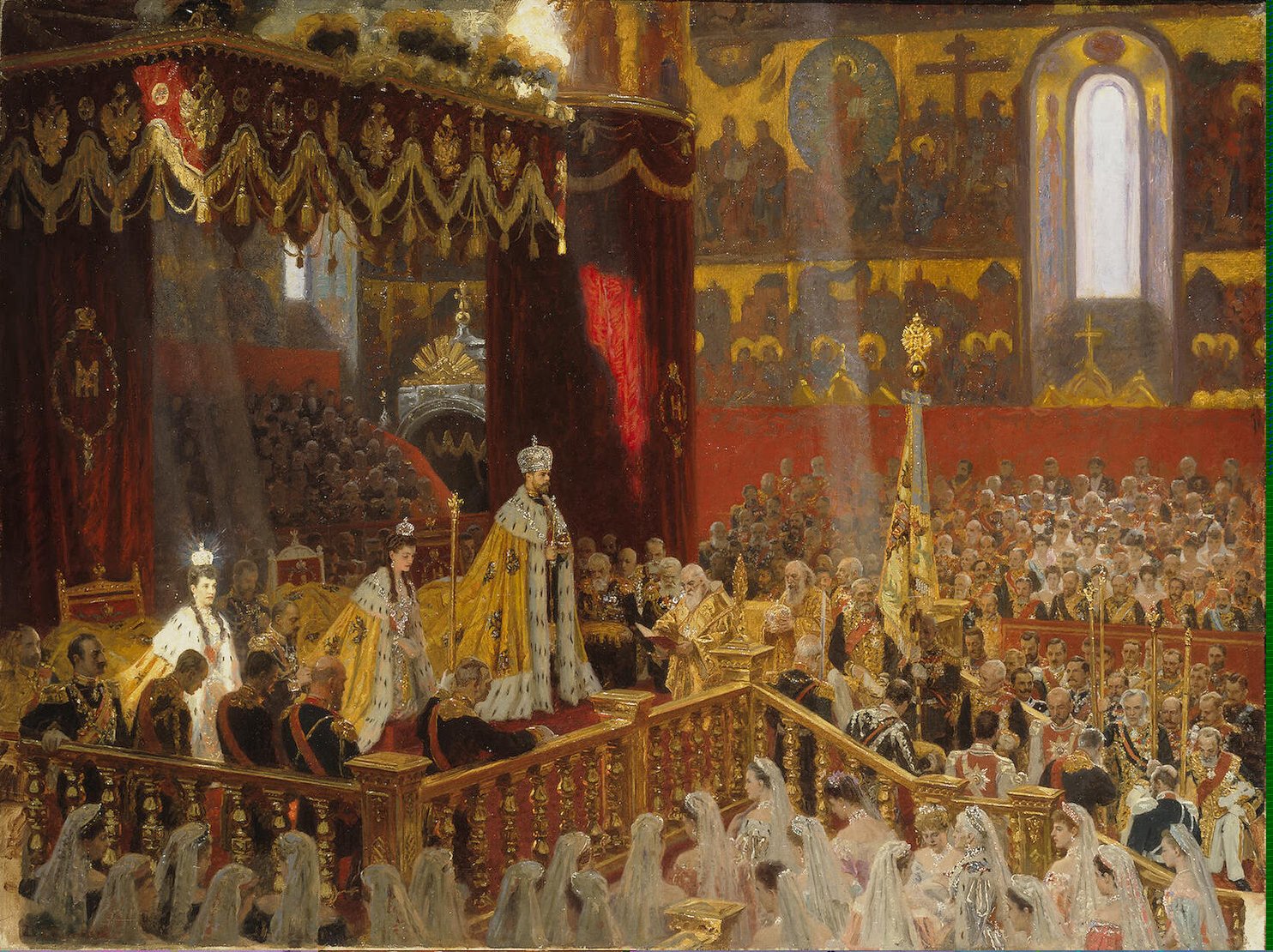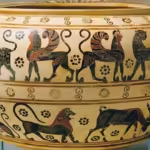The Russian Coronation Robes stand as enduring symbols of imperial might and cultural richness that have captivated historians and art enthusiasts for centuries. These magnificent garments, worn during the most sacred ceremonies of Russian monarchy, represent far more than mere ceremonial dress – they embody the complex interweaving of power, tradition, and artistic mastery that defined the Russian Empire’s golden age.
The Evolution of Imperial dress in Russian History
The journey of Russian imperial dress spans centuries of cultural transformation and political upheaval, reflecting the nation’s ever-changing identity through its most prestigious ceremonial garments. The evolution of these magnificent pieces mirrors Russia’s transformation from a medieval principality to a world power.
The Influence of Byzantine Heritage
The earliest Russian Coronation Robes drew heavily from Byzantine traditions, reflecting Russia’s position as the spiritual successor to the Eastern Roman Empire. The adoption of Byzantine ceremonial customs began with Prince Vladimir’s conversion to Orthodox Christianity in 988 CE.
The Byzantine influence manifested in the use of deep purples, rich crimsons, and elaborate gold embroidery that became hallmarks of Russian imperial dress. These design elements symbolized both spiritual and temporal authority, creating a visual language that proclaimed Russia’s divine right to rule.
The Rise of Muscovite Style
As Moscow emerged as the center of Russian power, a distinctive Muscovite style began to develop in royal ceremonial dress. This period saw the integration of traditional Russian elements with imported luxury materials.
The Muscovite period introduced the distinctive use of sable fur trimming and pearl embroidery that would become synonymous with Russian royal regalia. These innovations reflected both Russia’s natural resources and its growing trade connections with Asia and Europe.
The Petrine Reforms and Western Influence
Peter the Great’s modernization efforts dramatically impacted the design of Russian Coronation Robes, introducing European elements while maintaining distinctively Russian characteristics. This fusion created a unique aesthetic that would define imperial Russian style.
The introduction of Western tailoring techniques and fashion elements led to a hybrid style that showcased Russia’s position between East and West. However, traditional Russian elements were carefully preserved in ceremonial garments to maintain continuity with the past.
The Artistry and Symbolism of Imperial dress
The creation of royal garments, including the Russian Coronation Robes, involved the highest levels of craftsmanship and artistic expertise. Each garment represented countless hours of skilled labor and centuries of accumulated knowledge.
Materials and Techniques
The finest materials from across the empire and beyond were gathered for these prestigious garments. Silk from China, pearls from the Persian Gulf, and gold thread from Venice came together under the hands of master craftsmen.
The technical complexity of these garments required collaboration between various specialized workshops. Embroiderers, goldsmiths, and tailors worked in concert to create garments that were both visually stunning and deeply meaningful.
The Role of Regional Influences
Regional artistic traditions from across the vast Russian Empire found their way into royal garments. This integration reflected the multicultural nature of the empire.
The incorporation of Central Asian patterns, Caucasian metalwork techniques, and Siberian fur-working methods created a truly unique Russian imperial style that celebrated the empire’s diversity.
Symbolic Elements and Motifs
The Russian Coronation Robes, in particular, carried deep symbolic significance. The double-headed eagle, imperial crowns, and Orthodox crosses were carefully incorporated into the designs to reinforce the tsar’s divine authority.
Color choices were particularly significant in imperial dress, with different hues (purple, red, gold) carrying specific meanings. For the coronation robes, gold was the dominant color, symbolizing divine right and imperial authority.
The Cultural Significance of Russian Coronation Robes

The Russian Coronation Robes are not merely elaborate garments; they serve as vital artifacts that embody the rich cultural heritage and historical narratives of the nation. As emblems of power, religion, and identity, these robes reveal much about the complex interplay between tradition and authority in Russian society.
Ceremonial Context and Importance
Every detail of the Russian Coronation Robes is interwoven with the rituals of coronation, a sacred rite marking the ascension of a new ruler to the throne. During this momentous occasion, the robes symbolize more than power; they invoke the divine favor necessary for rightful rule.
What makes these ceremonies particularly captivating is their intricate connection with the Russian Orthodox Church. The tsar donned the regal robes as both a political leader and a spiritual sovereign, bridging earthly governance with divine approval.
As the world watched the splendid display of imperial magnificence, these robes served to reinforce social hierarchies and unify the realm under the chosen monarch’s domain. They acted as a physical manifestation of the ruler’s commitment to uphold justice, faith, and the well-being of his people.
Art and Identity
Throughout Russian history, the designs of Russian Coronation Robes have also reflected broader trends in national identity, art, and culture. They encapsulated the spirit of their time and offered insights into the values and aspirations of Russian society.
In moments of upheaval, such as during the Time of Troubles or the revolutionary fervor of the early 20th century, changes in the design and use of ceremonial dress echoed shifting public sentiments. Garments from these tumultuous times often took on unique patterns, revealing the emotional landscape surrounding leadership and governance.
This artistic evolution extended beyond royal courts, influencing the wider fabric of national fashion and aesthetics. The luxurious materials and intricate craftsmanship of the robes became aspirational symbols for various layers of Russian society, eventually permeating local crafts and folk traditions.
The Intersection of Politics and Religion
The intricacies of Russian Coronation Robes lay not only in their visual appeal but in their heavy connotations of politics mingled with profound religious significance. The Tsar’s divine right to govern was frequently articulated through drapery adorned with Orthodox iconography and scriptural references.
For instance, the presence of ecclesiastical motifs melding with the secular allure of the robe exemplifies an essential aspect of Russian identity. The blending of church and state conveyed a powerful message to the populace—that their monarch was appointed by divine ordinance, thus reinforcing loyalty and subservience.
The constant interplay between sacred symbols and political authority can be seen as a calculated effort to ensure the stability of the monarchy. This synergetic relationship between the elements of power and faith continues to resonate within contemporary Russian culture.
The Legacy of Russian Coronation Robes in Modern Times

Even in the present day, the influence of Russian Coronation Robes persists, continuing to inspire artists, designers, and historians alike. The luster of these historical vestments transcends mere fascination; it invites ongoing dialogue about their role in shaping modern Russian identity.
Contemporary Fashion and Design Influences
Modern Russian designers often draw inspiration from the opulent embellishments and historical narratives embodied by imperial robes. The rich textiles, vibrant colors, and intricate embroidery find revival in contemporary fashion, reflecting a trend toward embracing national heritage.
Designers like Valentin Yudashkin and Igor Chapurin have skillfully incorporated elements reminiscent of Russian Coronation Robes in their works. The marriage of ancient motifs with modern aesthetics enables a reconnection with the Russian past, leading to significant cultural commentary and creative exploration.
By doing so, these designers engage the new generation in a conversation about the nation’s storied history while promoting a sense of pride in Russian artistry.
Historical Preservation and Education
Beyond fashion experimentation, there exists a dedicated effort to preserve the authentic Russian Coronation Robes, ensuring that artifacts remain a tangible link to cultural history. Museums across Russia safeguard these precious garments, presenting them to the public and educating visitors about their historical context and significance.
Exhibitions focusing on imperial attire emphasize the invaluable contribution of artisans and craftsmen who painstakingly poured their skills into creating these magnificent pieces. Such endeavors highlight the enduring importance of maintaining historical knowledge and cultivating a deeper appreciation for Russia’s artistic legacy.
Furthermore, academic research centered around these robes contributes to a richer understanding of Russia’s socio-political landscape and cultural transformations through time. The continued study of imperial garments serves as a reminder of the need to recognize and honor collective memory.
Reflection on National Identity
Lastly, Russian Coronation Robes prompt important questions regarding national identity and cohesion in a diverse society. Today, Russia comprises myriad ethnicities and cultures, which necessitates conversations about unity amidst diversity—something that the regal robes manage to encapsulate through their intricate blend of influences from various regions within the empire.
As the country navigates contemporary challenges and seeks to solidify its global standing, the wisdom drawn from historical relics like the Russian Coronation Robes may offer valuable insights. They remind us that despite differences, shared identity can emerge through recognition and celebration of cultural heritage.
Conclusion

The study of Russian Coronation Robes provides a remarkable window into not only the aesthetic splendor of imperial Russia but also the deeper meanings intertwined with power, tradition, and identity. Through their evolution over centuries, they illustrate the complexities of a nation’s journey, marked by cultural exchange, political struggle, and overarching narratives of divine right.
From Byzantine legacies and Muscovite adaptations to Petrine reforms, the robes tell a compelling story of transformation and continuity. They serve as embodiments of hope, faith, and national pride, inviting reflection on how our past shapes the identities we cultivate today.
As we continue to explore the majestic tapestry of Russian imperial vestments, we celebrate both the artistry involved and the vital historical lessons embedded within these extraordinary garments. The Russian Coronation Robes remain not just as artifacts of clothing but as vital threads woven into the rich fabric of Russian culture and history.
✉️ Stay Connected — Subscribe for Weekly Updates
Discover timeless stories, practical wisdom, and beautiful culture — delivered straight to your inbox.
*We only share valuable insights — no spam, ever.






